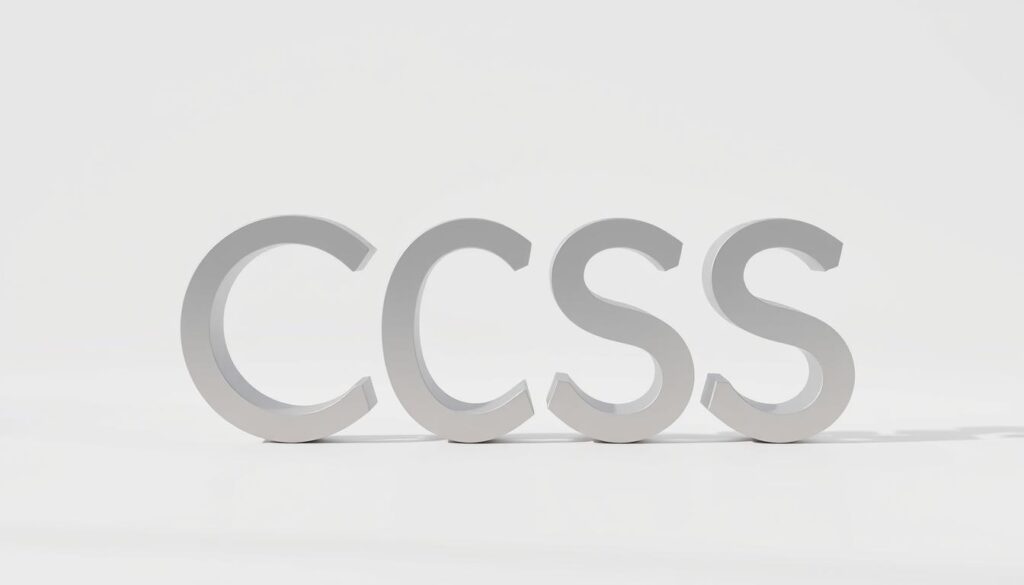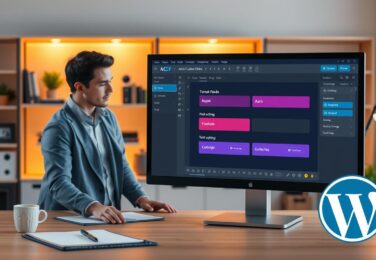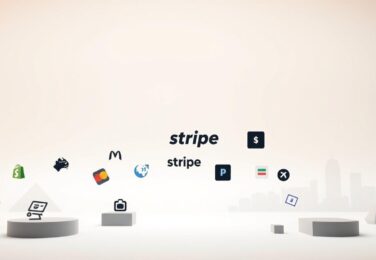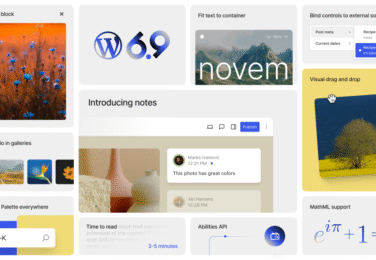Top Web Development Technologies Every Business Should Know in 2026

Table of Content
A mid-sized Melbourne retailer was losing mobile traffic after a product launch. Their site was outdated, using an old css framework and a heavy PHP stack. This led to slow page speeds, high bounce rates, and a team stuck in firefighting mode.
After switching to modern web frameworks, introducing edge server-side rendering, and choosing a slim css framework, the retailer saw big improvements. They saw better conversion rates and more organic traffic in just three months.
This article is a deep dive into the web development technologies of 2026 that Australian businesses need to know. We cover the best modern web frameworks, css framework trends, and php frameworks evolution. We also look at WebAssembly use cases.
We break down technical choices in simple business terms. We use insights from Google’s Core Web Vitals updates, framework roadmaps, headless CMS trends, and edge compute advancements. Need help with these changes? Contact us at hello@defyn.com.au.
Key Takeaways
- Prioritise PWAs, server-side rendering and edge compute for performance and SEO.
- Choose a css framework that supports theming and accessibility to protect brand consistency.
- Evaluate modern web frameworks by team skill, ecosystem and long-term maintainability.
- Consider WebAssembly for compute-heavy features; use php frameworks where rapid backend iteration matters.
- Adopt API-first and CI/CD practices to speed releases and reduce deployment risk.
Progressive Web Apps and the Future of Mobile-first Experiences
We look at how progressive web apps change mobile-first strategies for Aussie businesses. PWAs mix native and web features with fast loading, offline use, and deep platform links. They’re key for 2026 web development, focusing on better user experience and accessibility.
What defines a modern Progressive Web App in 2026
In 2026, a PWA is installable and runs on a secure service worker. It loads fast, works offline, and supports push notifications. It also works well on low-spec phones and poor networks, common in regional Australia.
Native features integration has improved. Android and iOS support payment handlers and platform-like navigation. Deep links help users find content easily, whether from search or a shared URL.
Benefits for Australian businesses: performance, offline access and discoverability
PWAs help local businesses in many ways. They’re fast, which boosts conversions and reduces cart abandonment. Having one codebase saves on development costs compared to native apps.
Offline access is vital for field teams and remote stores with poor signals. PWAs keep work sessions productive and data syncs reliable when internet returns.
Search engines index PWAs well. A well-built PWA can improve discoverability. This supports local SEO and enhances the customer journey from search to purchase.
Key tools and libraries for building PWAs
We suggest a simple toolset for building strong PWAs:
- Workbox for service worker tasks and caching.
- Lighthouse and WebPageTest for performance and accessibility audits.
- Vite or webpack for fast bundling.
- Framework-specific plugins like Nuxt PWA or Next.js PWA plugin for easier integration.
- Automated manifest and icon generators for correct installability assets.
Using a PWA with a strong CSS framework supports responsive website design while keeping the interface consistent. We often combine modern web and CSS frameworks to deliver consistent performance and ease of use.
| Area | Why it matters | Recommended tools |
|---|---|---|
| Service workers | Offline-first behaviour and repeat visit speed | Workbox, custom service worker scripts |
| Performance auditing | Improves Core Web Vitals and search visibility | Lighthouse, WebPageTest |
| Build and bundling | Faster dev cycles and smaller payloads | Vite, webpack |
| Framework integration | Faster PWA features with less custom code | Nuxt PWA, Next.js PWA plugin, Angular PWA |
| Design system | Brand consistency and responsive UI | Any modern css framework paired with component libraries |
Server-side Rendering and Edge Computing for Speed
We explain how server-side rendering and edge computing make pages load fast for Australians. By moving rendering closer to users, pages load quicker. This makes websites better for SEO and easier to use for businesses in Australia and Asia-Pacific.
What’s the best way to render pages in 2026? Hybrid approaches are leading the market. Static site generation is for stable pages, while server-side rendering is for custom views. Client-side hydration adds interactivity without slowing down the initial load.
What about big websites? On-demand Incremental Static Regeneration and streaming SSR help large sites update quickly. These methods cut down on rebuild costs and keep sites fast even when lots of people are visiting.
How does edge computing help? Running SSR at the CDN edge with tools like Vercel, Cloudflare Workers, and Fastly Compute keeps things fast across APAC. Edge middleware handles tasks like authentication and A/B tests, so the origin server doesn’t get overwhelmed.
What are the benefits for businesses? They see better website performance, higher rankings, and lower hosting costs during busy times. Customers in Australia get fast and consistent service, which boosts sales and satisfaction.
What should we consider for Australian projects? Pick providers with Australian edge points or strong APAC presence to reduce delays. Watch out for cold-starts for serverless functions and use warmers when needed.
How do we keep things secure and private? By keeping secrets off the client, using short-lived token exchanges, and never exposing sensitive logic in browser code. Leveraging latest web technologies such as ‘edge logic’ ensures data protection while maintaining speed.
Which modern web frameworks support these patterns? Popular frameworks now include SSR and edge features to make deployment easier. Choosing the best framework depends on your team’s skills, website traffic, and integration needs.
Modern JavaScript Frameworks Driving Interactivity
We look at how modern web frameworks make websites interactive in 2026. This guide helps teams choose tools that are easy to use, fast, and reliable.
What makes the best modern web framework in 2026?
It’s about how easy it is for developers, how fast it runs, and its ecosystem. TypeScript support, server-side rendering, and static generation are key. Tools like Vite and esbuild make building faster. Features for accessibility and support from vendors help businesses stay safe.
How do popular frameworks compare?
| Framework | Strengths | Trade-offs | Best fit |
|---|---|---|---|
| React (+Next.js) | Huge ecosystem, many libraries, large hiring pool, mature patterns | Can require runtime optimisations and larger bundles without care | Large-scale apps, enterprise projects needing stability |
| Vue (+Nuxt) | Clean API, gentle learning curve, flexible single-file components | Ecosystem smaller than React but growing; fewer enterprise templates | Teams seeking balance between simplicity and power |
| Svelte (+SvelteKit) | Compile-time optimisation, very small bundles, excellent runtime speed | Smaller talent pool and fewer third-party libraries | Startups focused on performance and low hosting costs |
Choosing a framework for enterprise vs startup projects
- For enterprise, frameworks with long-term support and talent are best. React with Next.js or Vue with Nuxt are good choices.
- Startups should focus on quick development and low costs. SvelteKit or lean Vue setups are ideal.
- Consider the Australian job market, library support, and future of web development plans before deciding.
Practical integration guidance
- Match your framework with a css framework for a consistent look and fast styling.
- Use CI pipelines, strong testing tools, and edge-aware SSR/SSG to meet 2026 standards.
- Choose frameworks that work well with API-first back ends to keep things organised and efficient.
css framework
We explore the best css frameworks for keeping a brand’s voice consistent while meeting technical needs. The right framework shapes how typography, spacing, colours, and component behaviour look across products. This makes QA cycles shorter and marketing updates faster.

- Does the framework support design tokens and CSS custom properties for global themes?
- Can teams apply a single source of truth for colour, type, and spacing?
- Will component styles stay the same across screen sizes and platforms?
Token-driven systems are preferred. They help marketing and engineering deliver the same look reliably.
What about accessibility, theming, and performance?
Accessibility is a must. We look for frameworks that support semantic markup, ARIA patterns, and focus management. Tools like axe and Lighthouse in the CI pipeline help catch issues early.
Theming should use CSS custom properties and design tokens. This makes it easy to switch between light/dark modes and brand themes without needing a lot of JavaScript.
For performance, we choose frameworks that are utility-first or tree-shakeable. This avoids shipping unused CSS. We focus on critical CSS extraction, native features, and server-side extraction for fast page rendering.
Here are some popular and emerging options for 2026:
- Tailwind CSS — utility-first, strong theming via config and CSS variables, wide ecosystem and integration with modern build tools.
- Bootstrap 5+ — component-rich, familiar grid and utilities, useful for rapid prototypes and teams with existing Bootstrap expertise.
- Bulma and Foundation — semantic component focus, stable choices for teams preferring clearer HTML structure.
- UnoCSS and WindiCSS — on-demand utilities and minimal bundle sizes for teams prioritising speed.
- MUI (Material-UI), Ant Design, Headless UI — component libraries that pair with React and Vue for accessible, ready-made components.
How should teams choose between options?
- Decide whether strict brand control or developer speed is the priority.
- For enterprise projects, favour tokenised frameworks and component systems that integrate with a design system.
- For smaller teams, consider Tailwind or UnoCSS to accelerate development while keeping bundle sizes low.
Practical tips we apply in projects:
- Audit CSS delivery with Lighthouse and WebPageTest early and often.
- Enforce purge and tree-shake rules in CI to remove unused styles.
- Ensure the css framework supports server-side rendering and static CSS extraction for critical inline styles.
- Use accessible component libraries when building complex forms and controls.
| Framework | Strength | Best fit | Performance notes |
|---|---|---|---|
| Tailwind CSS | Utility-first, flexible theming | Startups, design-led teams | Small runtime if purged; excellent tree-shaking |
| Bootstrap 5+ | Component-rich, familiar grid | Rapid prototypes, teams with legacy Bootstrap | Larger CSS footprint without custom purge |
| UnoCSS / WindiCSS | On-demand utilities, minimal bundle | Performance-focused apps | Extremely small bundles with atomic generation |
| MUI / Ant Design | Accessible, ready-made components | Enterprise apps with React or Vue | Good if tree-shaken; component CSS can be heavy |
| Bulma / Foundation | Semantic components, clear structure | Teams valuing readable HTML | Moderate size; stable and predictable |
We align our choices with the latest web development technologies 2026 and modern web frameworks. This keeps front-end work maintainable and ensures the brand experience is consistent across all channels.
WebAssembly and High-performance Web Apps
JavaScript sometimes can’t handle tasks that need speed or predictability. WebAssembly changes this by allowing compiled code to run in the browser. It’s a key tech for 2026, helping to handle heavy tasks while keeping development tools modern.
When should we use WebAssembly? It’s best for tasks that need a lot of CPU power, real-time processing, and when using native libraries is smart. Keep JavaScript or TypeScript for UI, routing, and business logic. This way, developers can work efficiently while Wasm handles the heavy tasks.
Which use cases benefit most from WebAssembly?
- Image and video processing on the client for instant previews and transforms.
- Encryption, compression and cryptographic workflows that demand low latency.
- Complex parsing, simulations and large data transforms for analytics tools.
- Real-time engines: games, audio processing, CAD viewers and financial calculations.
- Ported Rust or C++ libraries to reuse battle-tested native code in the browser.
What does the tooling landscape look like in 2026? Rust is leading with mature crates, wasm-pack, and cargo workflows. AssemblyScript offers a TypeScript-like path to Wasm for quicker adoption. Tools like wasm-bindgen work with bundlers and Vite plugins for efficient loading and bundling.
How has debugging improved? Browsers like Chrome and Firefox now offer better source maps and tools for tracing Wasm. This makes profiling and error reporting more useful for production systems.
Practical integration tips we recommend:
- Profile first. Target only the hotspots for Wasm to reduce bundle bloat.
- Lazy-load Wasm modules and cache via service workers to balance startup time and performance.
- Keep UI and framework concerns in your best modern web framework and reserve Wasm for compute-heavy modules.
- Monitor binary size when using a css framework and other assets to avoid slow first loads.
- Prefer memory-safe languages like Rust to minimise security risks and enforce sandboxing practices.
Tooling checklist for teams moving to Wasm in 2026:
| Need | Recommended tools | Benefit |
|---|---|---|
| Language & safety | Rust | Memory safety and rich ecosystem for WebAssembly |
| TypeScript-like path | AssemblyScript | Faster onboarding for JS teams |
| Interop | wasm-bindgen, wasm-pack | Simplified bindings and bundling |
| Bundling & dev tools | Vite, Webpack Wasm plugins | Async loading and better dev experience |
| Debugging & observability | Browser source maps, profiler tools | Traceable stacks and performance insights |
Security and performance advice we follow: validate all inputs to Wasm modules, sandbox where feasible and favour Rust for its safety model. Measure impact on first contentful paint and balance Wasm benefits against initial load costs common to web development technologies 2026.
We encourage teams to view WebAssembly as a targeted optimisation. Use it where JavaScript cannot meet latency or throughput demands. Pair Wasm with your chosen best modern web framework and a consistent css framework to deliver fast, maintainable and user-centred web apps.
API-first Architecture and Headless CMS
We explain why an API-first architecture is key for modern stacks. It includes how headless CMS platforms fit into this approach. This model helps teams work faster and build for different channels.
What are the benefits for businesses? Marketing and content teams can publish without waiting on engineering. APIs for web and mobile reduce duplicated work. It also makes scaling and maintenance easier.
Which integration patterns work best in production?
- Server-side rendering for SEO-critical pages and fast first paint.
- Client-side hydration for highly interactive experiences that need real-time updates.
- Hybrid SSG plus preview APIs so authors see draft content while users get static performance.
What platforms should teams evaluate? Contentful, Strapi, Sanity and Prismic each expose REST and GraphQL APIs. They provide webhooks and offer strong editor UX. GraphQL is good for complex front-ends. REST is better for simpler use-cases.
How do we keep an API-led system secure and stable?
- Use API gateways for routing, rate limits and observability.
- Adopt token-based auth such as OAuth2 or JWT and restrict admin consoles to IP whitelists or VPNs.
- Employ content versioning and staged releases inside the CMS for safe rollbacks.
- Run CI checks that validate content contracts so schema changes don’t break production.
Which operational choices matter when pairing a css framework with an API-first approach? Choose a framework that supports theming and accessibility. This lets front-end teams work independently without reworking component APIs. It streamlines handoffs and keeps brand consistency across channels.
Below we compare common integration patterns, typical platform strengths and recommended security practices. This helps decision-makers choose a path that fits their scale and risk profile.
| Pattern | Best for | Platform examples | Key benefits | Security &ops notes |
|---|---|---|---|---|
| Server-side rendering | SEO-sensitive sites and content hubs | Contentful, Prismic | Fast indexing, predictable HTML delivery | Rate-limit API calls, validate content contracts in CI |
| Client-side hydration | Highly interactive single-page apps | Sanity, Strapi | Rich UX, live updates, lower server cost | Use JWTs for client auth, limit public payload size |
| Hybrid SSG + preview | Marketing sites with editorial workflows | Contentful, Sanity | Best load times with content preview for editors | Protect preview endpoints, use staged releases |
| GraphQL gateway | Complex product front-ends and mobile fleets | Hasura, custom GraphQL layer over CMS | Precise payloads, reduced over-fetching | Schema versioning, query depth limits and caching |
Modern Back-end Frameworks and php frameworks Landscape
We explore the current back-end scene to guide Australian businesses in selecting the right tools. The rise of modular architectures and cloud-native operations has changed the game. We focus on what matters most: developer productivity, operational cost, and maintainability over time.
How php frameworks have evolved for modern web apps
Laravel made development easier with Eloquent ORM, queues, and API resources. This speeds up the delivery of REST and GraphQL services. Laravel Vapor introduced serverless deployment to PHP, appealing to teams moving to AWS.
Symfony stuck to a component-driven approach, supporting large-scale apps and long-term upkeep.
PHP 8 and later brought performance boosts, JIT improvements, and clearer typing. Tools like Swoole and RoadRunner cut latency for high-traffic sites. This makes PHP a strong contender for many modern needs, even where other languages were once preferred.
Alternatives and when to choose a language-specific framework
Node.js frameworks like Express and Fastify are great for event-driven APIs and WebSockets. They work well with JavaScript front ends, reducing cognitive load for full-stack teams.
Python frameworks, such as Django and FastAPI, excel in data processing and machine learning. They offer mature ORMs and a vast scientific library ecosystem.
Go and Rust are top choices for microservices needing low latency and predictable memory use. They’re ideal when concurrency, binary deployment, and low overhead are key.
Scalability, testing and maintainability best practices
Begin with a modular monolith to enforce clear boundaries. Gradually extract microservices when needed for operational complexity or scaling. This approach avoids the pitfalls of premature fragmentation.
Automated testing is vital. Use a mix of unit, integration, and contract tests. Run these in CI pipelines to ensure quality before deployment.
Observability is essential. Employ structured logging, distributed tracing, and OpenTelemetry-compatible tools. Metrics dashboards and alerts help teams respond to performance changes affecting Australian users.
Database strategies should match read/write patterns. Use read replicas for heavy loads, partition tables for growing datasets, and Redis caches for hot paths to reduce latency.
| Use Case | Recommended Frameworks | Strengths | Operational Notes |
|---|---|---|---|
| Rapid web apps with rich features | Laravel, Symfony | Fast development, strong ecosystems, mature ORMs | Works well with managed hosting and serverless platforms; good Australian community support |
| Real-time APIs and low-latency I/O | Node.js (Fastify), Swoole (PHP) | Event-driven, high throughput, low overhead | Require careful connection pooling and backpressure handling |
| Data-heavy or ML adjacent services | FastAPI, Django | Rich data libraries, async support, strong typing | Pair with Python data ecosystem and specialised deployment pipelines |
| High-concurrency microservices | Go, Rust | Low latency, efficient resource use, single-binary deployment | Smaller ecosystems for web abstractions; ideal for performance-critical paths |
| Front-end styling and quick prototypes | Works with any back end | Compatibility with the best modern css framework improves brand consistency | Choose CSS framework after assessing accessibility, theming and performance |
Automation, CI/CD and DevOps for Faster Releases

We talk about how automation and DevOps make releases quicker and safer. Continuous integration and continuous delivery link code checks to deployment. This helps teams focus on new features, not just fixing problems.
What should a CI pipeline include?
- Linting and static analysis to catch style and syntax problems early.
- Unit tests and integration tests to validate behaviour before merge.
- Type checks and dependency security scans using tools such as Snyk and Dependabot.
- Performance gates that measure bundle size and Core Web Vitals thresholds.
How do CD and release patterns reduce user impact?
- Automated deployments to staging and production with clear rollback paths.
- Canary releases plus feature flags for progressive rollouts.
- Smoke tests and monitoring dashboards launched with each release to verify health.
Infrastructure as Code keeps cloud resources reproducible. We suggest Terraform or Pulumi for multi-cloud setups across AWS, Azure, and Google Cloud. This includes Australian data centres. It ensures teams can work in predictable environments with modern web frameworks and next-gen stacks.
Which tools fit different needs?
| Task | Popular tools | When to choose |
|---|---|---|
| CI orchestration | GitHub Actions, GitLab CI, CircleCI | Choose by repo host, parallelism needs and self-hosting policy. |
| GitOps / CD | Argo CD, Flux | Use for Kubernetes-driven workloads and declarative deployments. |
| Front-end deployment | Vercel, Netlify | Ideal for static sites and JAMstack apps built with modern web frameworks. |
| Security and dependency checks | Snyk, Dependabot | Integrate into CI for automated patching and alerts. |
Best practices keep pipelines reliable and repeatable.
- Enforce pipeline gates that include accessibility audits and performance budgets tied to your css framework and bundle targets.
- Produce reproducible builds via lockfiles and container images to avoid drift.
- Make observability part of delivery: include logs, traces and dashboards in every deployment.
Local Australian considerations matter. Choose cloud regions and CDNs with APAC coverage to reduce latency for end users. This choice supports optimisation in web development technologies 2026 and fits well with DevOps teams using CI/CD.
We help teams adopt these practices for faster, safer, and predictable releases. This lets product teams focus on innovation.
Performance Optimisation and Core Web Vitals
We focus on steps that make sites faster and more user-friendly. This guide links performance optimisation to Core Web Vitals. It helps teams make clear decisions for projects using 2026 web development technologies and popular css frameworks.
First, fix the critical rendering path. Reduce main-thread work and serve assets efficiently. These actions make pages load faster and work better on different connections in Australia.
Practical steps to improve load times and interactivity
- Inline critical CSS and defer non-critical styles for faster first render.
- Server-side render key pages to boost Largest Contentful Paint (LCP).
- Split JavaScript bundles, use web workers or WebAssembly for heavy tasks to reduce main-thread blocking.
- Preconnect and preload important fonts, use font-display: swap, and subset fonts to avoid layout shifts.
- Serve modern image formats like WebP or AVIF, use responsive srcset, and lazy-load offscreen images.
Measuring and monitoring Core Web Vitals for Australian audiences
Use field data and lab tools for a full view. Real User Monitoring (RUM) like Chrome UX Report gives live data from Sydney, Melbourne, and other areas. Lighthouse and WebPageTest offer lab metrics for debugging.
- Segment RUM by geography and connection type to spot metro versus regional issues.
- Set SLA-style targets per page type: product listings, detail pages and checkout flows.
- Track LCP, INP (or FID where legacy) and CLS over time and alert on regressions.
Caching, image delivery and third-party script management
- Use CDN edge-cache plus origin-cache-control headers for rapid delivery across Australia.
- Implement cache-busting strategies to invalidate assets without long downtime.
- Audit third-party scripts, load them asynchronously, sandbox where possible and defer non-essential tags until consent.
- Leverage Service Workers for precaching critical assets in PWAs to improve repeat loads.
Business outcomes are key. Faster pages boost organic rankings and conversion rates. Small performance improvements can lead to big returns on sales and retention.
| Area | Action | Expected Impact |
|---|---|---|
| Critical rendering path | Inline critical CSS, preload key fonts, SSR for first paint | Improved LCP, faster visible content |
| JavaScript | Code-split bundles, use web workers or WebAssembly | Lower main-thread work, better interactivity (INP) |
| Images | Serve WebP/AVIF, responsive srcset, CDN image transforms | Smaller payloads, quicker loads on mobile |
| Fonts | Preconnect, preload critical fonts, font-display: swap | Reduced render-blocking, lower CLS |
| Third-party scripts | Audit, async load, consent-based defer | Fewer unexpected bottlenecks, stable metrics |
| Caching | Edge caching, origin cache-control, service worker precache | Faster repeat visits, resilience across regions |
| Governance | Geo-segmented RUM, SLA targets per page | Clear performance ownership, targeted fixes |
Conclusion
Australian businesses should start by focusing on what users need. Use Progressive Web Apps, server-side rendering, and edge delivery to make websites faster and more reliable. Also, choose a strong css framework that keeps your brand consistent and works well on all devices.
Find the right web framework for your team and project. Think about how it affects your developers and the website’s performance. For tasks that need a lot of computing power, WebAssembly is a good choice. Use API-first patterns and modern php frameworks for your back end.
Include CI/CD and observability in your work from the start to lower risks and technical debt. Start small, test, and then grow what works best for your business. If you need help, contact us at hello@defyn.com.au for custom website development in sydney advice on using these web development technologies in 2026.










